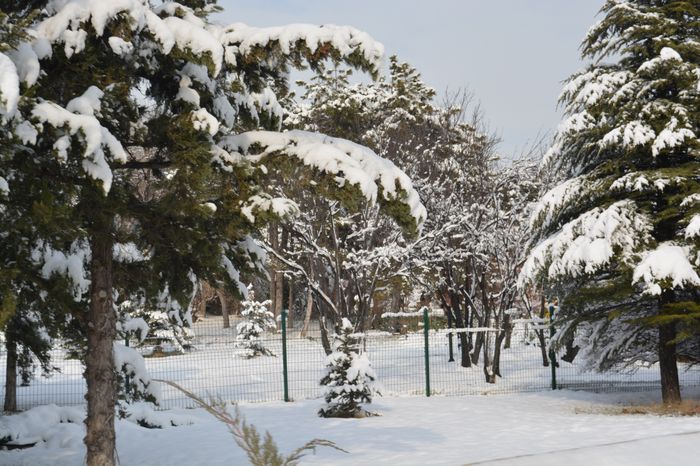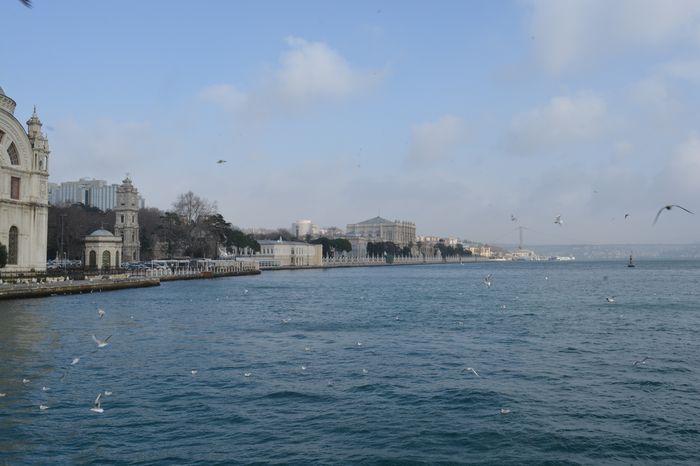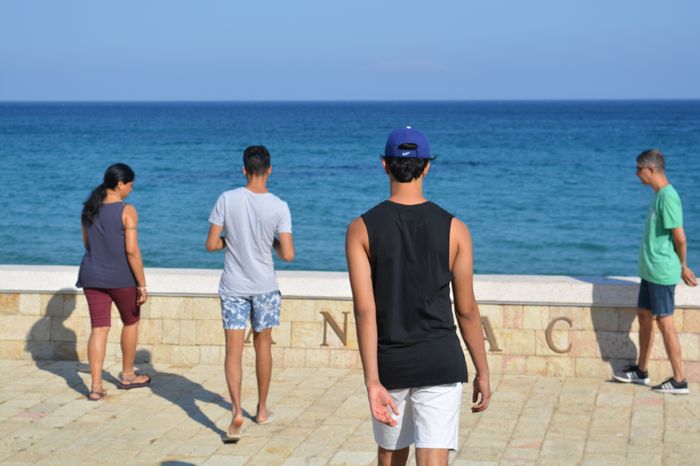Visitors come down and proceed to another room upstairs, where are to be seen state robes and aigretted turbans worn by the various Sultans, from Muhammad II. to Mahmud the Reformer; portraits of Sultan Mahmud the Reformer and of Sultan Abd-ul-Mejid, his son; and a small picture of the famous Ali Pasha, mentioned by Byron, asleep, with his head pillowed on the knees of his Greek concubine, Vassilikt.
In the centre of the room below is a glass case containing a fine collection of Roman, Byzantine, Arabic, and Turkish coins. In the glass cases round the walls are numerous precious stones and other costly objects, among which may be remarked, in the glass case on the right on entering, a sitting Egyptian figure made out of a single pearl.
1. The small mosque facing the entrance to the Treasury is the JTirka-i-Sherif Jamesl (Mosque of the Holy Mantle), to which foreigners are not admitted. This is the shrine where the prophet’s mantle, javelin, and sword, the prayer carpet of Abu-bekr, his father-in-law, the arms and turban of Omar, a mace made out of a piece of rafter belonging to the shrine at Mecca, and last, but not the least, the Sanjak Sherif, or Sacred Standard of the Prophet, the Palladium of Islam, are kept closely guarded. This mosque is open only once a year, on the 15th day of Ramazan, for the procession of the Hirka-i-Sherif.
2. Visitors are conducted next to the Throne Hall, a simple edifice entirely denuded of any ornamentation. The Throne is a sort of large divan, from which the Sultans formerly gave audience to foreign ambassadors, who stood outside the latticed window private tour istanbul.
3. The Library, next to the Throne Hall, contains some thousands of Persian, Arabic, Turkish, and Greek MSS. of no interest to visitors; and a genealogical tree with medallion portraits of the Sultans.
Bagdad Kiosk, to which the Sultan withdraws to rest, when he comes in mid-Ramazan to worship at the Shrine of the Prophet’s Cloak, is the next place shown to visitors. It is said to have been built by Sultan Murad IV. in the style of a Kiosk which he had seen at Bagdad, and which had taken his fancy. Its walls are artistically decorated with blue tiles of the best workmanship, and all the inside of the cupola is covered with deerskin. The inlaid mother-of-pearl arabesques on the doors, divans, and chairs, are worth seeing. The inlaid silver inscription on the chairs is Padishahim chock Yashah, meaning ‘ Long life to my Emperor Bagdad Kiosk commands a splendid view of the harbour, Galata, and Pera.
Medjidieh Kiosk
Visitors are next shown over Medjidieh Kiosk, a white marble pavilion built by Sultan Mejid. The terrace commands a splendid view. The column seen at the back of this Kiosk is that of Theodosius II.
The Imperial Museum of Antiquities.—It is situated in the Old Seraglio grounds, and is open every day from 9 A.M. to 2.30 P.M. in winter and 4 P.M. in summer, except on Fridays. Admission 5 piastres per head ; kodaks, sticks, umbrellas, etc., must be left at the door.
During the last twenty years the Museum of Antiquities at Constantinople has, as an institution, acquired a far more important character than it previously possessed. Its present importance is due entirely to its able director, His Excellency Hamdi Bey.
The Museum of Antiquities may be said to date from 1850, when Fehti Ahmed Pasha, Chief of the Ordnance Department, conceived the idea of collecting together the different objects of antiquity lying uncared for, and grouping them in the courtyard of the Church of St. Irene. In 1875 this place was found to be too small, and an imperial Iradeh, or decree was issued directing Soubhi Pasha, then Minister of Public Instruction, and a numismatist of no mean repute, to have the collection removed to the more spacious and artistic Chinill Kiosk (Pottery Pavilion), itself a fine specimen of Turkish architecture.









